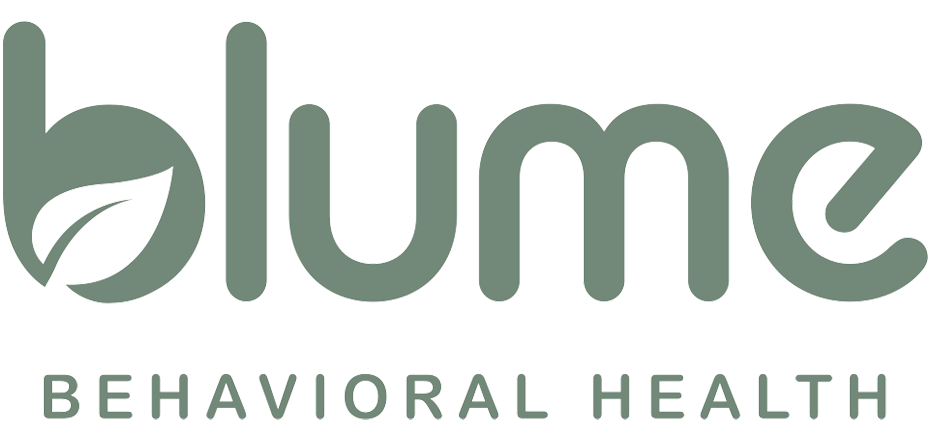Bipolar disorder and borderline personality disorder (BPD) are two mental health conditions that are often misunderstood and misdiagnosed. While they share some similarities, such as mood swings and impulsive behavior, they are distinct disorders with unique characteristics and treatment approaches.
We will explore BPD vs bipolar disorder, providing a clearer understanding of these complex conditions. By gaining insight into their differences, individuals can better identify their symptoms and seek appropriate help for their specific needs.
Learn how our teen treatment programs can help your child overcome mental health challenges in a safe and supportive environment.
What Is Borderline Personality Disorder?
Borderline Personality Disorder (BPD) is a mental health disorder characterized by unstable moods, behaviors, and relationships. People with BPD often experience intense emotions, have difficulty regulating their emotions, and struggle with maintaining stable relationships. This disorder typically begins in early adulthood and can significantly impact a person’s daily life.
Individuals with BPD may experience extreme fear of abandonment and have a persistent fear of being alone. This can lead to impulsive behaviors such as excessive spending, reckless driving, binge eating, or engaging in risky sexual behavior. They may also struggle with self-image issues, experiencing feelings of emptiness, and having difficulties managing anger.
The exact cause of BPD is unknown; however, research suggests that environmental factors such as childhood trauma or adverse life events may contribute to its development. Genetics and brain chemistry may also play a role.
People with BPD often have other co-occurring mental health disorders such as depression, anxiety disorders, or substance abuse disorders. Individuals with BPD must receive proper diagnosis and treatment. Learn more about what we treat at our behavioral health facility.
What Are The Symptoms Of Borderline Personality Disorder?
Some common symptoms of borderline personality disorder (BPD) include:
- Intense fear of abandonment: Individuals with BPD often have an intense fear of being abandoned or rejected by others. This fear can lead to extreme behaviors such as clinging to relationships, becoming overly dependent on others, or pushing people away.
- Unstable relationships: People with BPD may struggle to maintain stable and healthy relationships. They may have a pattern of idealizing someone one moment and then feeling intense anger or disappointment towards the same person in the next moment.
- Impulsive behavior: Individuals with BPD may engage in impulsive behaviors such as binge eating, reckless spending, substance abuse, or self-harm.
- Mood swings: People with BPD may experience frequent and intense mood swings that can last for hours or even days. These mood changes can be triggered by perceived abandonment or criticism from others.
- Distorted self-image: People with BPD often struggle with a distorted sense of self. They may have feelings of emptiness, a lack of identity, or a sense of not knowing who they truly are.
- Self-harming behavior: Many individuals with BPD engage in self-harm as a way to cope with their emotions and find relief from intense emotional pain.
- Intense bouts of anger: People with BPD may experience episodes of intense anger that can be triggered by small things and last for extended periods.
- Chronic feelings of emptiness: Individuals with BPD often feel a deep sense of emptiness and boredom that cannot be filled no matter what they do.
Don’t hesitate to seek teen therapy to overcome these symptoms and achieve healthy living. We want to assist you and your family throughout the recovery process.
What Is Bipolar Disorder?

Bipolar disorder is a mental health condition that is characterized by extreme shifts in mood, energy levels, and behavior. People with bipolar disorder experience periods of intense mania, where they may feel overly happy or excited, have racing thoughts, and engage in impulsive behavior. These manic episodes are often followed by periods of depression, where individuals may feel sad, hopeless, and have little motivation.
Bipolar disorder affects approximately 5.7 million adult Americans every year and can develop at any age. While the exact cause of bipolar disorder is not fully understood, it is believed to be a combination of genetic, environmental, and neurochemical factors.
Types of Bipolar Disorder
There are four main types of bipolar disorder: bipolar I disorder, bipolar II disorder, cyclothymic disorder, and other specified and unspecified bipolar disorders. Each type has different symptoms and severity levels.
People with bipolar I disorder experience extreme manic episodes that last for at least seven days or require hospitalization. They may also experience depressive episodes lasting at least two weeks.
Bipolar II disorder is characterized by less severe manic episodes called hypomania and depressive episodes similar to those in bipolar I but lasting for a shorter time.
The cyclothymic disorder involves symptoms of hypomania and mild depression that occur for at least two years in adults (or one year in children).
Other specified and unspecified bipolar disorders include symptoms that do not fit into the above categories but still meet the criteria for a diagnosis of bipolar disorder.
It’s essential to note that everyone experiences mood swings from time to time; however, people with bipolar disorder experience more severe shifts in mood that can significantly impact their daily life. With proper treatment and guidance from our mentorship program, individuals with bipolar disorder can manage their symptoms and lead fulfilling lives.
What Are The Symptoms Of Bipolar Disorder?
Bipolar disorder is a mental health condition that is characterized by extreme shifts in mood, energy levels, and behavior. These changes can be severe and disruptive to daily life. In this section, we will discuss the symptoms of bipolar disorder.
- Manic Episodes: One of the main symptoms of bipolar disorder is experiencing manic episodes. During a manic episode, an individual may feel extremely energetic, and talkative, and have racing thoughts. They may also engage in risky behaviors such as excessive spending or reckless driving.
- Depressive Episodes: Another common symptom of bipolar disorder is experiencing depressive episodes. During a depressive episode, an individual may feel sad, and hopeless, and have low energy levels. They may also have trouble sleeping and experience changes in appetite.
- Mood Swings: People with bipolar disorder often experience extreme mood swings between mania and depression. These shifts can happen suddenly and without warning.
- Impulsive Behavior: Individuals with bipolar disorder may engage in impulsive behaviors during manic episodes such as reckless spending, promiscuous behavior, or substance abuse.
- Changes in Sleep Patterns: Bipolar disorder can also cause disruptions in sleep patterns. During a manic episode, an individual may need less sleep than usual while during a depressive episode, they may sleep excessively.
- Difficulty Concentrating: People with bipolar disorder may have trouble concentrating on tasks during both manic and depressive episodes.
- Social Isolation: Due to the extreme mood shifts and impulsive behavior associated with this condition, people with bipolar disorder may withdraw from social activities and isolate themselves from friends and family.
If one or more of these symptoms persist, seek help from our residential treatment center for teens and adolescents. We can help you understand your mental health condition and learn healthy coping mechanisms.
BPD vs Bipolar Disorder: How Do They Differ?
Borderline Personality Disorder (BPD) and Bipolar Disorder (BD) are two commonly misunderstood psychiatric conditions that affect millions of people worldwide. While both disorders share some similar symptoms, they are distinct and have different underlying causes.
Mood Fluctuations
One of the key differences between BPD and BD is their mood fluctuations. People with BPD typically experience intense and unstable emotions, which can fluctuate rapidly from extreme highs to lows. This is known as emotional dysregulation. On the other hand, individuals with BD experience distinct episodes of mania or hypomania (elevated mood) and depression, which can last for days or weeks at a time.
Duration of Mood Swings
Another distinguishing factor is the duration of these mood swings. In BPD, the emotional changes can occur multiple times a day and may last for hours at a time. In contrast, BD episodes can last for days or even months before shifting into another mood state.
Triggers for Mood Shifts
The triggers for these mood shifts also differ between BPD and BD. For someone with BPD, emotional dysregulation can be triggered by external factors such as stressors or interpersonal conflicts. However, bipolar episodes are often triggered by life events or changes in medication.
Symptoms
In terms of symptoms specific to each disorder, people with BPD may struggle with identity disturbances, chronic feelings of emptiness, fear of abandonment, and impulsivity. In comparison, individuals with BD may experience grandiosity during manic episodes, lack of motivation during depressive episodes, and psychotic symptoms such as delusions or hallucinations.
Treatment Approaches
While there are some similarities between Borderline Personality Disorder and Bipolar Disorder in terms of symptoms like mood swings and impulsivity, they are distinct disorders with different causes, duration, triggers, and treatment approaches.
Blume Behavioral Health Can Assist Teens With BPD And Bipolar Disorder

Blume Behavioral Health is dedicated to helping teens who struggle with mental health disorders, such as Borderline Personality Disorder (BPD) and Bipolar Disorder. These conditions can often be overwhelming and difficult for the individual and their loved ones.
At Blume Behavioral Health, we strive to create a safe and non-judgmental environment for teens struggling with BPD or Bipolar Disorder. Our goal is to equip them with the necessary tools and strategies to improve their well-being and live fulfilling lives.
If you or your teenage child is struggling with BPD or Bipolar Disorder, contact us at Blume Behavioral Health. We can help you take the first step toward mental wellness.
Dr. Aneta Lotakov Prince is a board-certified psychiatrist with over 20 years of clinical experience treating adolescents and adults facing severe mental illness, co-occurring substance use disorders, and complex emotional and behavioral health challenges. Certified by the American Board of Psychiatry and Neurology, she holds an active DEA registration and California medical license. Dr. Prince’s patient-centered approach is rooted in compassion and driven by a dedication to improving quality of life and supporting long-term recovery. She remains deeply committed to empowering each individual she works with to build a life of purpose, connection, and resilience.
